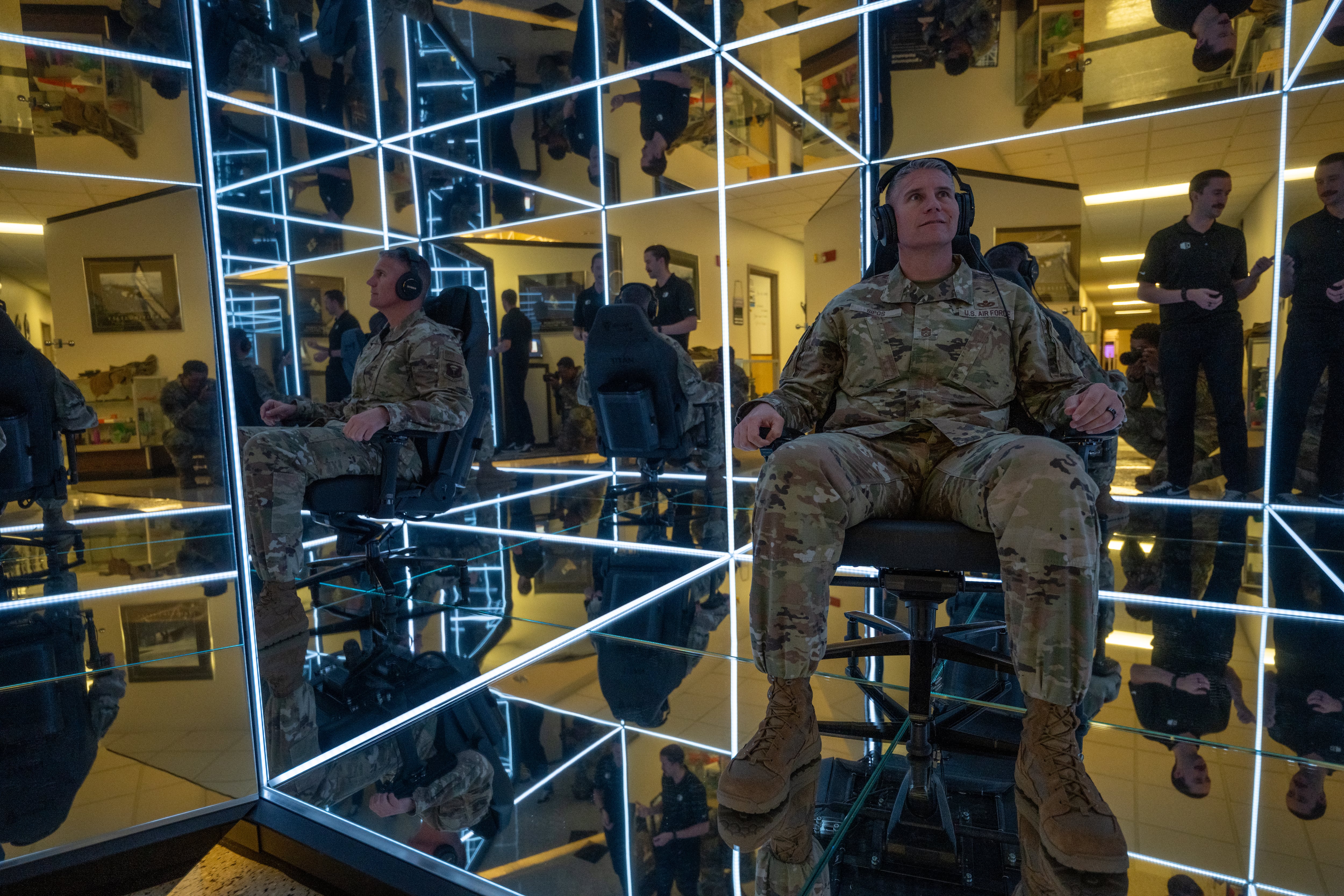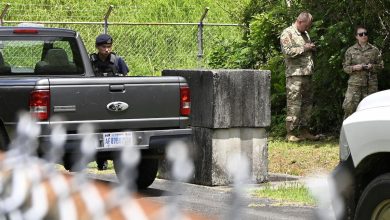At dozens of bases across the Air Force, troops are undertaking tried-and-true relaxation techniques — biofeedback, meditation — in shiny mirrored cubes that can project light patterns and even galaxies. The experience, as one researcher put it, is more like a “Disney ride” than a studio or clinical office.
This is Lumena Mindgym, a flashy new curriculum-based therapeutic tool that’s taking the Air Force by storm. More than two dozens Mindgyms have been installed at base fitness centers and support facilities for about $100,000 apiece; Mindgym just marked its first installations outside the continental United States, in Kuwait and Turkey, earlier this year.
As the number of Mindgym advocates across the Air Force grows, other services are also entering talks to purchase the technology. It’s a lot of flash and glitz to deliver relaxation to stressed-out service members. But the number of passionate advocates for Mindgym in the military is growing, and some argue the attention it’s getting from troops who might otherwise avoid meditation and de-stressing techniques might make it worth every penny.
The technology itself was created by an entrepreneur with a finance background, rather than a scientist; company executives make clear they are not the clinical experts.
“We don’t have anybody in-house that’s a neuroscientist or Ph.D.,” Brandon Murphy, head of growth for Lumena, told Military Times in an interview, adding that they did maintain an advisory board of doctors and researchers.
Nor was Mindgym designed with the military specifically in mind. Founders were shopping the technology at a Colorado-based sporting tradeshow in 2019, Murphy said, when they encountered Adam Strang, Biotechnology Product Line Lead at the Air Force Research Laboratory.
Strang was intrigued by the tech and connected the team with veteran Air Force pilot and human performance expert Jannell MacAulay, who’d become a vocal advocate for Mindgym and help develop the curriculum to be used by airmen.
“It’s like a flight simulator for your mind,” MacAulay posted on Facebook in April during a visit to one of the Air Force’s facilities.
By 2022, a seed fund grant had enabled the installation of the first Mindgym at Hill Air Force Base, Utah, complete with a clinically validated curriculum and wearable components that measured brain activity and heart rate.
The first users were explosive ordnance disposal technicians from Hill’s 775th Civil Engineering Squadron. And that initial group of 55 airmen gave Mindgym its best evidence for effectiveness.
Over 219 20-minute training sessions, according to Lumena Labs, the group self-reported an average 30% improvement in mood. The biodata receptors documented a 16.2% reduction in stress indicators, while 61% of users said their stress management capabilities improved. Sleep quality also improved for 15% of users.
“Many in the group reported stronger focus during the Weighted Airmen Performance Systems (WAPS) testing — the program that determines promotions for Staff Sergeant (E-5) and Technical Sergeant (E-6),” Lumena stated in study analysis. “They also cited decreased incidents of road rage and across-the-board improvements in their marital relations, gym workouts, and even their golf scores.”
While follow-up studies have not been conducted, the feedback appears to demonstrate how even a small amount of therapeutic attention to the brain and the mental resilience of service members under stress can make a significant difference.
Strang, at the Air Force Research Lab, told Military Times in an interview that Mindgym compared favorably to the sensory deprivation float tanks popular for promoting relaxation and stress reduction.
“Float tanks are messy and maintenance is challenging,” Strang said, adding that it was never clear to him if the atmosphere of the tank or the opportunity to take a nap in it made the most difference to his mental state.
“I hopped into Mindgym, and it didn’t feel like a waterless float tank to me at all,” he said. “It felt like a psychedelic experience.”

AFRL has plans to study the efficacy of Mindgym in comparison with other mindfulness and relaxation technologies, though those are predicated on future funding awards.
Strang emphasized that Mindgym is not a panacea for mental health or resilience but said boosting cognition and reducing stress, particularly in a “next frontier” warfare environment where troops are joining a real fight from their desks as drone pilots or Space Force satellite operators, was worth the dedicated investment.
“They’re $100,000 cubes, I think, the last time I checked,” Strang said. “Let’s say they facilitate relaxation and recovery across 100 people by 10%; what’s the operational impact of that? I don’t know. But what happens if one person who is flying an F-35 sits in that cockpit and, because of these interventions, prevents a mishap of a $60 million aircraft? Would that be worth it? Probably.”
As the Air Force continues to install Mindgyms, the company has recently had more conversations with Navy officials, even demonstrating the Mindgym at the Sea Air Space naval trade show earlier this year. Murphy said he saw value for the technology particularly in the submarine community, where stress and operational tempo were high.
There are now 32 different sessions a service member can select in Mindgym; a grant last year enabled the recent development and deployment of a stroboscopic light therapy protocol that is supposed to promote higher theta brain wave state, enabling reduced stress in high-intensity situations.
“I’d honestly love to have [a Mindgym] on every military base on the globe,” Murphy said, “so that there’s not a service member that doesn’t have access to something like this.”
Hope Hodge Seck is an award-winning investigative and enterprise reporter covering the U.S. military and national defense. The former managing editor of Military.com, her work has also appeared in the Washington Post, Politico Magazine, USA Today and Popular Mechanics.
Read the full article here





